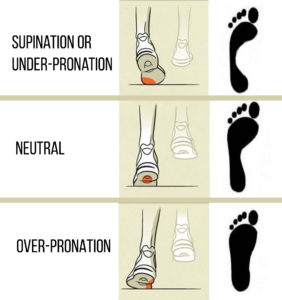Running shoes should be selected after careful consideration. With so many brands and styles of shoes in the market today, it is very important how to choose the best running shoes for your feet and needs. There is no “right shoe” that fits all runners. However, injury patterns and researches have shown that there are some general characteristics of the best and safe running shoe.
A best running shoe should protect your feet against injury, but at the same time, it should not do the work of the foot by providing extra cushioning and lots of extra support in the arch. A shoe should complement a strong foot. With new companies and various shoe options in the market, you can do some research online to find the types of shoes that you may like. Check the specifications on shoe material, weight, and heel-to-toe drop to find brands that follow the general guidelines below.

Characteristics of a good, safe running shoe include:
- Minimal heel-to-toe drop: It’s is the difference in the thickness of the heel cushion to the thickness in the forefoot cushion area. Shoes with no drop or a small drop of 6mm or less are the simplest choice for allowing the foot to normally support loading during each gait cycle
- Neutral: This suggests the shoe doesn’t contain motion control or stability components.. These extra components interfere with normal foot motion during weight-bearing.
- Light in weight: (280 gram or less for a men’s size 9; 225-gram ounces or less for women’s size 8)
Where can you look for running shoes?
Check with a local running club and ask the coach/leader from where their members commonly purchase shoes, or which merchants have expertise with running shoes.
How to buy a running shoe:
- Every time you go to buy running shoes, have your feet sized in the store. Be aware that you simply may have different-sized right and left feet. Forcing a shoe that is too tight on one foot will cause foot pain over time.
- Foot shape or arch height aren’t good indicators of what kind of running shoe to shop for.
- Avoid buying shoes based on advice given by someone in a store who has watched you walk into the store. When you walk and run, your gait and foot motion is very different.
- Be aware that all runners pronate, or drop the foot inward. Pronation may be a normal foot motion during walking and running. Pronation should not be the only criteria to select a running shoe. Runners may be told while shopping, a shoe with arch support is best. In fact, the opposite may be true. Pronation should occur and is a natural shock absorber. Stopping pronation with materials in the shoes may actually develop foot or knee problems. Excessive pronation can occur, but in most cases that can be corrected with therapy and exercises to strengthen the foot, leg, and hip rather than by a shoe.

- Try to buy running shoes at the end of the day when your feet have ‘swollen’ as much as they will and the shoes should not feel tight.
- Ensure the shoe has a wide toe box. The toe box is that area where your forefoot and toes are. You should be able to move your toes easily. Narrow toe boxes don’t permit the traditional splay or spread of the foot bones during running. This will prevent your feet from being able to safely distribute the forces during the loading phase of gait.

- There should be at least half-inch of room between the toes and front of the shoe.
- Try-out the shoe to determine if it is too narrow: take the insert out of the shoes and step on them on the ground. If your foot hangs over the sides of the insert, your shoe is too narrow.
- Be sure that the heel does not slip, when you test running in the shoe.
Shoe Qualities to Avoid:
- High and thick cushioning: Soft cushioning may actually encourage runners to adopt worse biomechanics and land with greater impact than shoes with less cushioning.
- Shoe that has a high heel cushion and low forefoot cushion.
- Extra arch support inserts or store-based orthotics. These items are often not necessary. Orthotics should be considered temporary fixes until foot strength is increased. Consult a therapist who can help you with exercises that can strengthen the foot so that you do not need arch supports on a daily basis.
When should you buy new running shoes?
- As a general rule of thumb, running shoes should be replaced every 500-700 km, but limited science has not identified the ideal time frame for all running shoes. Different shoes may vary in wear based on the type of material they’re made up of, and whether the shoes are used for other than running. Faster wear may occur if the shoes are used for other day-to-day activities than if they were used for running alone.
- Discard the shoes, if there are wear patterns on the shoe that reveal the sole layers underneath. Uneven wear on the shoe sole causes changes in running mechanics that cause injury.


